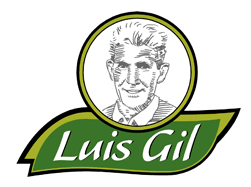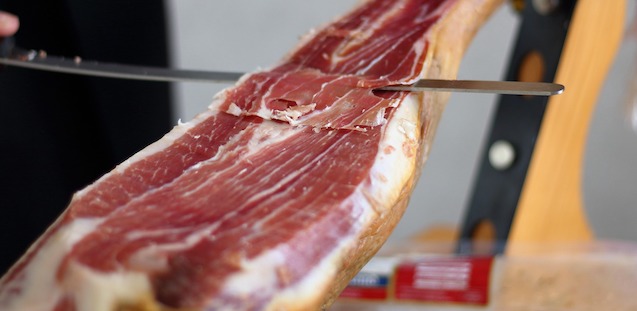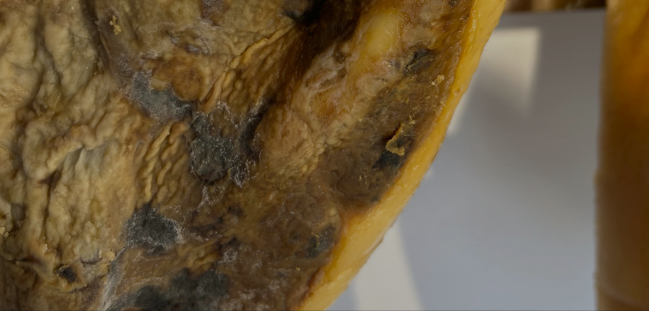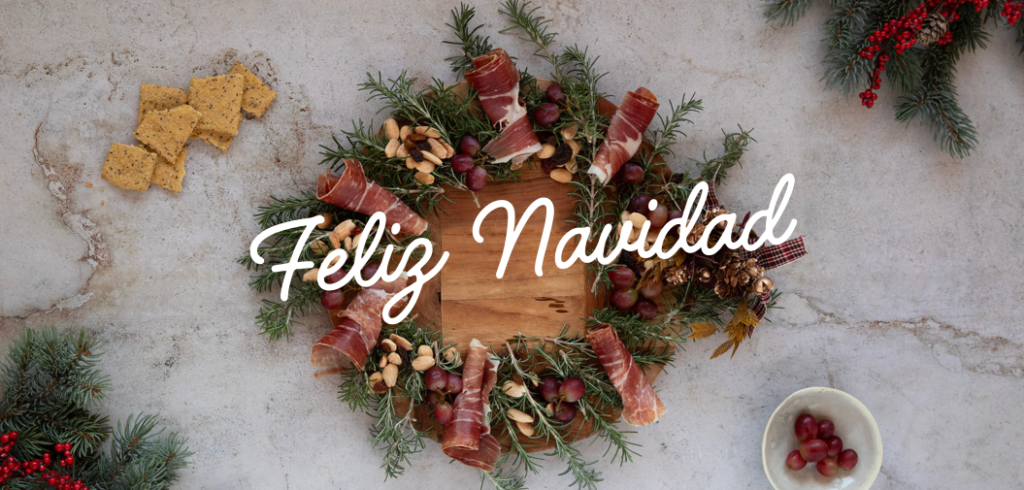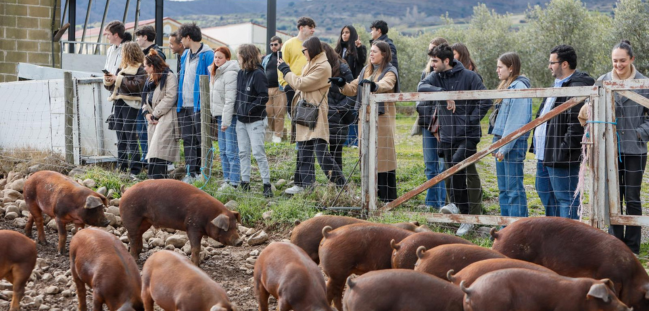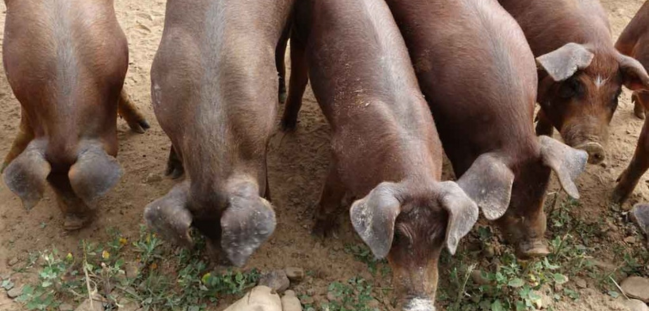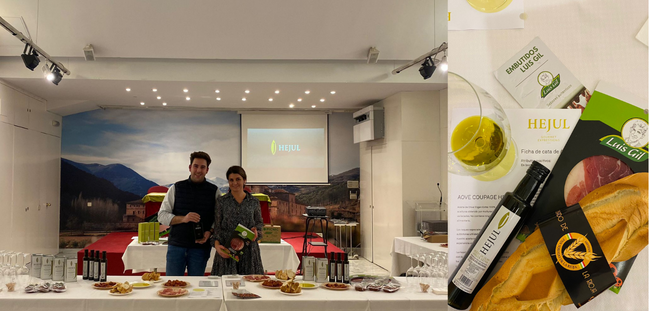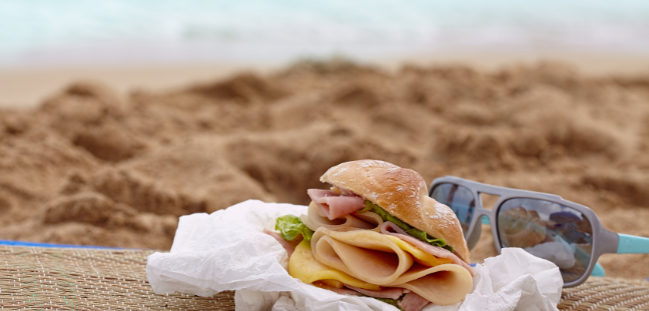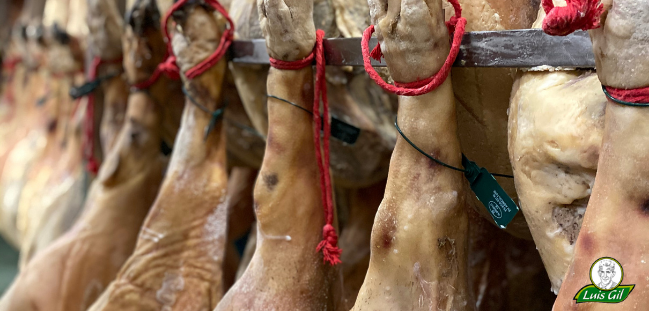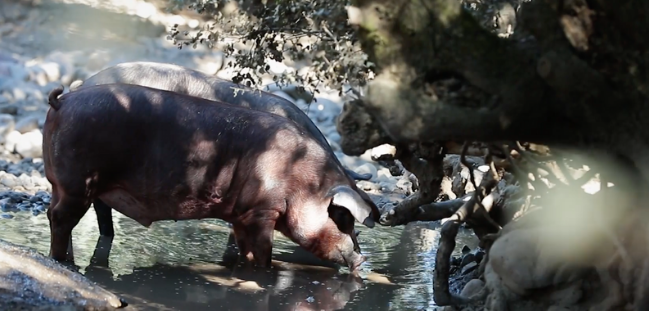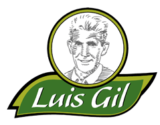It is a Christmas classic par excellence. The ham. Discover in our post how you should start it and what is the best knife cutting technique to get the most out of your organic ham this holiday season.
Few flavors can compare to that of freshly cut ham. A true delight especially if done correctly.
Utensils
Before starting make sure you have everything you need.
- And ham holder to place our ham, which must be well secured to guarantee the safety of the cut.
- And Ham knife. It is important that it is well sharpened to facilitate the work.
- And debarking knife, with a wide blade about 18 or 20 cm long, to remove the bark and clean the ham as we cut.
- Lace. A short-bladed knife that will be used to outline bones and difficult areas.
- Tweezers. This is a note, but we can use tongs to pick up the ham slices and present them on the plate.
- Ham Cover. We can use a cloth to cover the piece if we are not going to consume it in the same day and thus protect it from light and air and from possible germs or insects that may be attracted to our treasure. There are specific covers on the market for this purpose.
How should I place the ham in the ham holder?
The majority tendency is to place it with the hoof up for start consuming the ham through the mace which is the widest and juiciest part, where the leg has the most meat. It is the most recommended option if the ham is going to be consumed in a short time.
There are some theories that say that if you are not going to consume it quickly and it depends on the state of healing of the piece, you can consider starting it on the opposite part, the stifle, placing the hoof face down. This part, being closer to the bone, is more cured and by starting the ham here you ensure that it will be juicy when you go to eat it.
In principle we are in favor of starting the ham in the area of the ham, but depending on the colors.
How to open a ham?
He first cut should be done approximately two fingers from the hock bone, a small protuberance that the ham presents after the hoof. There we must make an incision with a skinning knife at a 45 degree angle until we touch the bone of the ham.
Cleaning the ham
Cleaning the ham well to be able to cut the slices comfortably is very important.
Little by little we must go removing the rind and yellow bacon of the ham until you reach the white fat. It is important to go very little by little and clean only the part that we are going to eat since the fat protects and preserves the ham.
The slicing technique
To begin cutting the first slices we will do it in the highest area Gently sliding the knife in the opposite direction to the hoof, without using too much force and always seeking to make a horizontal cut. Thus, taking out small slices, we will gradually advance until we expand the cutting area and have the entire mace open.
It is important to keep the hand opposite the knife higher and the body removed from the cutting area, for safety.
Las slices must be thin, almost transparent, covering the width of the piece but not the entire length. The idea is that they are about 2 to 3 centimeters about.
We must remove the rind and yellow fat as we cut the ham.
When we meet him hip bone We must make a shallow cut around the contour to outline it and ensure that the slices are separated correctly. We will gradually outline the bone as we go down.
And to save the bones of the fibula and ball of the femur What professionals recommend is to make a small step to maintain the horizontality of the cut.
Once Once the mace is finished we must turn the ham and repeat the cleaning operation to be able to extract the slices of the stifle.
When we reach the femur again, this time from the stifle part, we will proceed to clean the shank part, completing the mark we made near the hock bone and removing the excess bark and bacon.
Once this is done, we will turn the piece on the ham holder, this time putting the hoof on its side, this is what is called the third cut. Here when we meet the femur again we will mark it again so that the slices separate themselves. We will outline the bone and remove the slices with increasing inclination.
Conservation
To keep the ham in the best possible condition we must cover it with the cut fat slices to prevent it from drying out and rusting, and we can use a cloth to protect it or a ham cover.
For any questions we recommend you see this complete Ham Lovers tutorialwhere a professional cutter explains step by step all the phases of cutting a ham.
